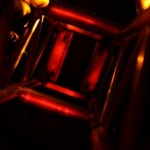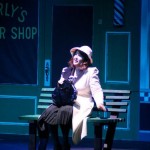Greatest Stage on Earth: Color and Emotion
Color. Nothing affects our mood and emotional response more. It can make us angry that Brutus just betrayed Caesar, dream that Juliet is just beyond our reach, and swoon as Cinderella dances the night away with her prince. Color is an amazing tool that when applied properly strengthens and carries the emotion of the subject you’re lighting.
 Warm colors can be an indication of spring and summer, happier times, or high energy. Cool colors can represent deep emotional thought, winter, nighttime, or flashbacks. When selecting colors for use in the HOW market, one of the most important things to learn is how they affect emotion and the human mind. Below is a breakdown of the specific areas of our emotional spectrum that color can affect.
Warm colors can be an indication of spring and summer, happier times, or high energy. Cool colors can represent deep emotional thought, winter, nighttime, or flashbacks. When selecting colors for use in the HOW market, one of the most important things to learn is how they affect emotion and the human mind. Below is a breakdown of the specific areas of our emotional spectrum that color can affect.
Red – Fire, Anger, Blood, Violence, Death, War. Perhaps one of the strongest and most perceived colors on the human eye, red is often representative of violence. It will increase an audience’s heart rate and respiration. Red is also associated with courage and bravery. Red is also the most noticed color.
 Orange – Joy, Sunrise, Happiness, Enthusiasm, Creativity, Health. The eye picks up orange as a very warm color, not as hot as red, but more active than yellow. It can increase oxygen flow to the brain and stimulate mental activity. As the color of fruit, orange is associated with health and vitality. When used with food displays it can make the items appear more appetizing.
Orange – Joy, Sunrise, Happiness, Enthusiasm, Creativity, Health. The eye picks up orange as a very warm color, not as hot as red, but more active than yellow. It can increase oxygen flow to the brain and stimulate mental activity. As the color of fruit, orange is associated with health and vitality. When used with food displays it can make the items appear more appetizing.
Yellow – Sunshine, Joy, Intellect, Energy, Happiness. Yellow warms us. It is seen as light. Strongly associated with electricity and energy. Pure yellow focuses our attention. However, when overused, yellow can become disturbing. When used against black, yellow will be recognized before other colors. This is why it’s used for safety warnings. Yellow also can contradict itself, representing both honor and loyalty as well as cowardice.
Green – Nature, Growth, Harmony, Freshness. Green is the most restful color for the eye. It can stimulate healing in patients. Green is associated with fresh food and nature. Green can also indicate a lack of experience. Dark shades can be associated with money and jealously. Yellow-green shows illness and discord. Aqua shows healing and protection. Olive is associated with peace.
 Blue – Sky, Ocean, Water, Stability, Trust. Most often associated with tranquility and peace. Blue represents both the sky and water. It calms the mind and slows down metabolism. A masculine color, blue represents power, integrity, seriousness and focus. Blue is very effective at calming an audience. It can also be very striking against a palette of warm colors.
Blue – Sky, Ocean, Water, Stability, Trust. Most often associated with tranquility and peace. Blue represents both the sky and water. It calms the mind and slows down metabolism. A masculine color, blue represents power, integrity, seriousness and focus. Blue is very effective at calming an audience. It can also be very striking against a palette of warm colors.
Purple – Royalty, Power, Nobility, Luxury, Wealth, Decadence. Traditionally associated with Kings and Queens. Purple denotes wealth and luxury. It also is indicative of mystery and magic. It is the most preferred color of children. Rare in nature, purple can often be considered artificial. It is the most feminine color.
White – Light, Good, Innocence, Purity, Faith, God. White is considered to be the color of perfection. It evokes safety and faith. It is a positive and strong emotional color. The color of snow, white is pure and clean. As such it is often associated with doctors, nurses and hospitals. Biblical figures are often depicted in white clothes. However, use white carefully as too much can overload the emotional center of the mind.
 Black – Elegance, Death, Evil, Mystery. Black is the most negative of colors. Arguably the absence of color, black is often associated with death and evil. Shadow can accent and heighten the color around it. Black makes things appear longer and thinner. Black when used as the color of objects, denotes strength and authority.
Black – Elegance, Death, Evil, Mystery. Black is the most negative of colors. Arguably the absence of color, black is often associated with death and evil. Shadow can accent and heighten the color around it. Black makes things appear longer and thinner. Black when used as the color of objects, denotes strength and authority.
An inescapable part of everyday life, color is all around us. Using it to your advantage is one of the best skills that you as a lighting designer can develop. Get out there and discover what works best for your subject and hone your skills today.
More information about color and color theory can be found here.
LatestHeadlines
- Upgrading Your Toolbox: City Theatrical DMXcat-E and DMXcat Multi Function Test Tool
- Claypaky Bringing Back the Sexy to Par Cans with the Midi-B FX
- Ayrton Evolves the Cobra, the Cobra2 Developed for the US Market
- MA Lighting Intros grandMA3 onPC Fader Wing and DIN-Rail Nodes
- Live Events LEVL Up Fest: A Festival to Aid our Industry